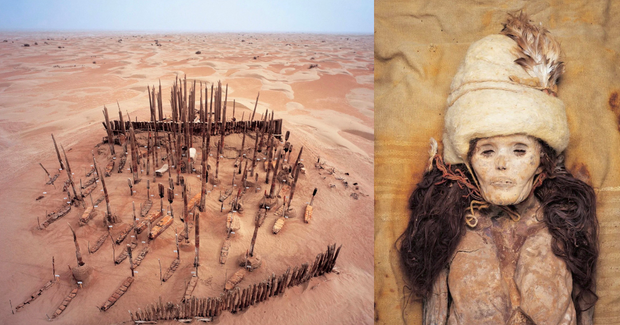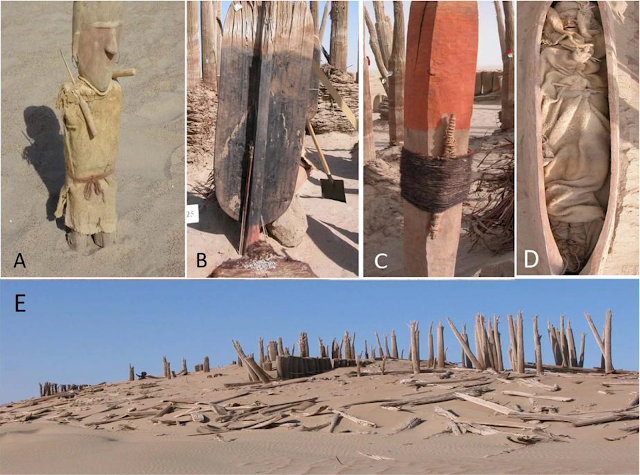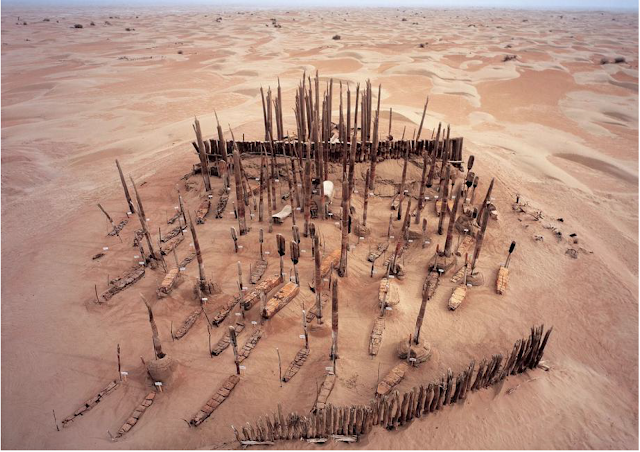
筆名「曜靈」,來自楚辭《天問》「角宿未旦,曜靈安藏?」,角宿二星,曾被認為係天門,太陽昇起必經天門而出,屈原於是問太陽夜晚匿埋咗喺邊?太陽匿埋咗,唯有磨劍到天明。
[Reprint] Position News: The Bronze Age Xinjiang Xiaohe Mummy is the closest genetically to ancient Nordic Asians
The Bronze Age Xinjiang Xiaohe mummy is the closest genetically to the ancient Nordic Asians. No intermarriage with foreigners but cultural interaction
2021/10/28
Since the beginning of the 20th century, European explorers discovered a series of mummies including "Princess Xiaohe" in the Tarim Basin, Xinjiang. The academic community has been studying the identity of these mummies. They are tall and wear wool felt hats and leather boots. Gold or brown hair, clothes and appearance are obviously different from those of the Asian region and even the native Chinese.

The latest genetic study published in "Nature" found that these mummies were local residents with deep roots. They seem to be descendants of ancient groups that disappeared in Eurasia after the last glacial period, and are also living in Siberia and the Americas today. Aboriginal ancestors.
In the past, anthropologists have proposed many theories about the origin of mummies in the Tarim Basin. One is that they are descended from the nomadic groups of Yamnaya and Afanasievo cultures from the steppes of the Black Sea region of Russia, because of their unusually tall stature and their woven wool clothing and Cattle-centric cultures, especially mummies, were covered in cowhide and found on wooden boats decorated with horned cow skulls. Another theory is that they were descendants of farmers who migrated from the desert oasis of Bactria, present-day Afghanistan, Turkmenistan and Uzbekistan; the claim is based on the similarity of the two regions' agricultural and irrigation systems.

Although the origins of both views are different, they suggest that these people brought Tocharian, an extinct Indo-European language branch, to what is now Xinjiang.
DNA shows closest relationship to ancient Norse Asians
To test these hypotheses, the team of molecular anthropologist Cui Yinqiu of Jilin University conducted DNA analysis on the genomes of 13 of the oldest mummies found at sites such as Xiaohe and Gumugou in the Tarim Basin, dating back 4,100–3,700 years ago. . The team then compared their DNA with DNA from five individuals from the adjacent Junggar Basin 5,000–4,800 years ago, as well as other ancient and modern Eurasian peoples.

The team found that the Tarim Basin mummies are most closely related to the genome of a previously identified ancient Nordic Asian, a once widespread hunter-gatherer tribe that had dwindled significantly by the end of the last ice age. Chung Jong-won, a population geneticist at Seoul National University who participated in the study, said the academic community had always wondered what happened to these people, but the discovery of them in the Tarim Basin in the early Bronze Age was "completely unexpected." Today, only a tiny fraction of the genomes of ancient Norse Asians remain in the genomes of living people, with the highest proportions of indigenous populations in Siberia and the Americas.
No intermarriage with "foreign race" but cultural exchange
The team added that the mummies were genetically very similar. Mummies located 400 kilometers apart at either end of the Tarim Basin had similar DNA proximity to those of their siblings. Although the mummies were local residents, they did not appear to have intermarried with immigrant herders in the nearby valley.
They were not culturally isolated, however, and by 4,000 years ago they had adopted new ideas and cultures, wearing woven wool clothing, building irrigation systems, growing non-native wheat and millet, herding sheep and goats, and raising cattle Milk is made into cheese.
Michael Frachetti, an archaeologist at Washington University in St. Louis, who was not involved in the research, pointed out that there is evidence from the research that new ideas, technologies and cultures of different cultures were transmitted to each other before the spread of genes or languages. Spread to these people isolated in the desert.
source:
Science, Western China's mysterious mummies were local descendants of ice age ancestors , 27 October 2021
Report:
Zhang, F., Ning, C., Scott, A. & et al. (2021). The genomic origins of the Bronze Age Tarim Basin mummies. Nature. doi: 10.1038/s41586–021–04052–7
Text / Alan Chiu
Like my work?
Don't forget to support or like, so I know you are with me..
Comment…